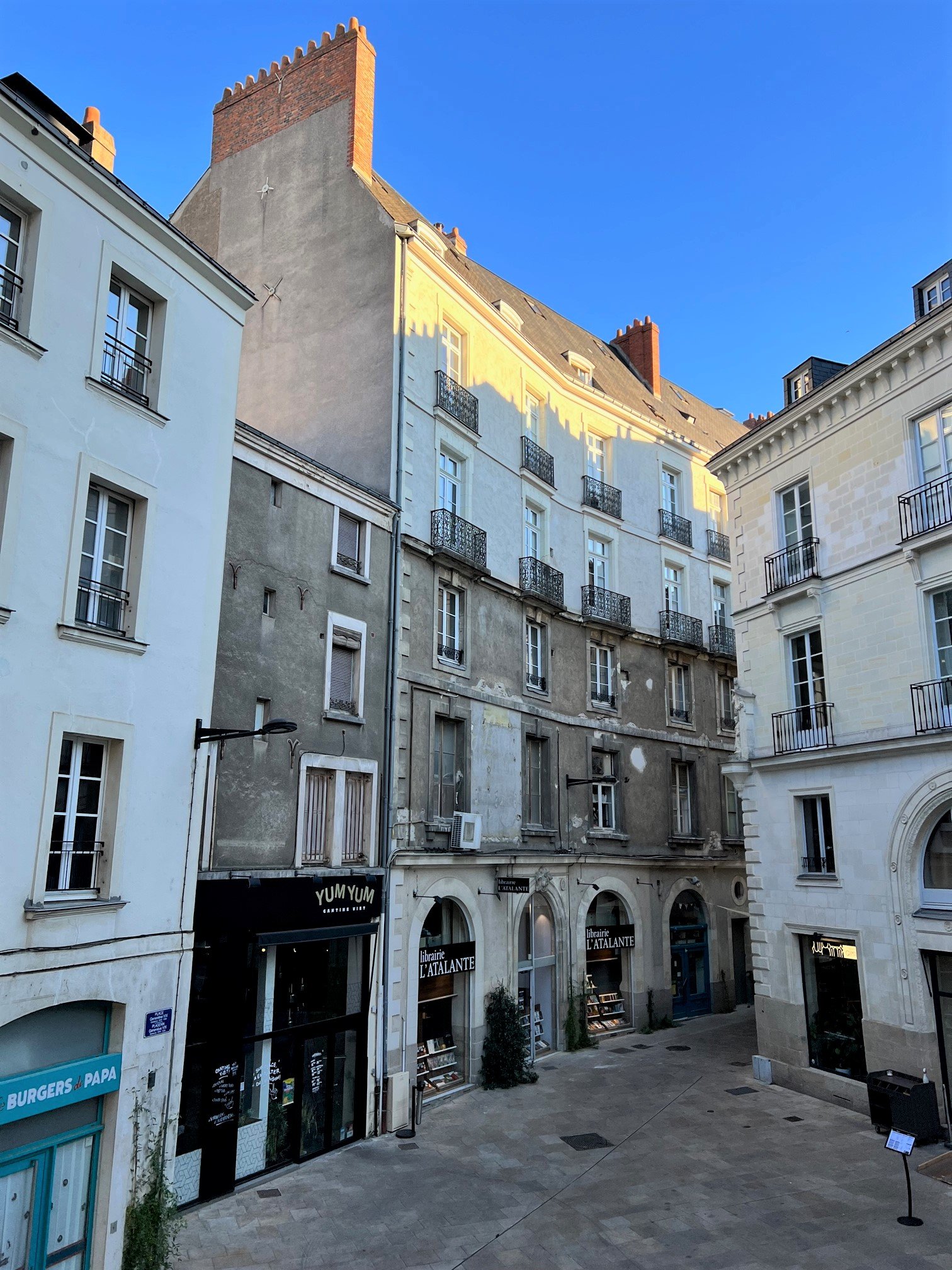Jonathan C. Lewis
Author and Artist
Jealousy
A fictional travelogue; four minutes to read.
In a happy delirium, I am sauntering the streets—actually, the non-streets—of Nantes, France. Window shopping. Eating at outdoor bistro tables. Stopping at ice cream parlors. Enjoying a leisurely coffee. Admiring the architecture. Appreciating the shade trees.
A couple in their eighties stroll by, holding hands. A young man on a bicycle, dressed like a Silicon Valley tech worker, pedals by. Two women, dressed from the pages of Elle, carry large bags from Ann Taylor, Talbot’s and Tumi. A mom pushes a stroller. A leashed dog walks his owner.
I’m the American gnawing on a ham and cheese sandwich on a buttered baguette. I’m balanced on the edge of a fountain. My name is Noah, and I’m on holiday.
In Nantes, the whole of the city center—the main streets, the alleys, the side streets—is a permanent, peaceful pedestrian mall. The entire downtown is one huge sidewalk. Nary a curb nor gutter in sight. No bossy signs telling me when to wait and when to walk.
Every day of the year, Nantes gives its million inhabitants the pleasure of shopping without the cacophony and chaos of stop-and-go lights, belching petroleum fumes, gunning motors, autos backfiring or screeching tires. No cars edging into crosswalks, no crosswalks at all.
Carless streets in Nantes are the city’s living room, a gathering place for the lifecycle of the city. They are not an afterthought, not a traffic-diverting sideshow nor a miniscule parklet shoved between parked cars.
Upscale boutiques prosper side-by-side with street cafes, name brand chain stores, hotels, pharmacies, cleaners and churches. Nothing blocks my inspection of the shop windows. I am safe, cared for, protected and put in the mood to spend my Euros.
Operating in sync with its car-free—I mean, care-free—pedestrian core, the Nantes tramway system is ubiquitous, quiet and pro-rider. At every stop, every door features a ramp which automatically slides out to meet the sidewalk so that mothers with strollers, the elderly with canes and people in wheelchairs have fast, easy, respectful access. Another small touch of caring concern for the citizens of the city.
Even the drainage grates under foot have panache. The iron slats curve in a graceful, wavy pattern. A small detail that, like a woman who knows how to accessorize, completes the outfit.
The city smiles at me. On a tree-lined public walkway, Philippe Ramette’s statue of a schoolgirl climbing off her pedestal is reason to pause and grin. His ‘Sidestepping’ statue of a man posed off-centered on one of the downtown’s busiest plazas, makes me laugh. Huge, colorful, quirky murals surprise me with arty good humor.
Travel is about experiencing new sights, new ideas, new ways of being. It is also clenched teeth and raging jealousy whenever I recall Nantes’ urban planning courage and civic imagination.
Auto-free downtown Nantes is so normal, so natural, so commonplace, that tourist guides don’t even bother to mention it. The guidebooks also don’t prepare me for my waves of envy, my covetous desire for my hometown to love me as much as it loves my car.





